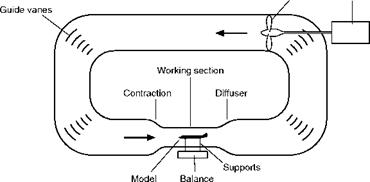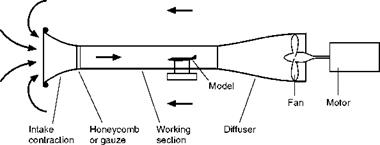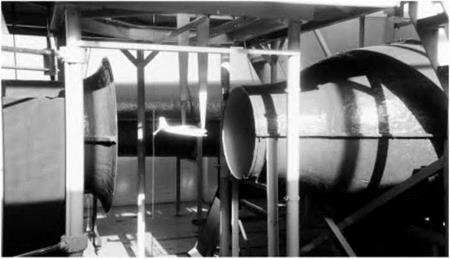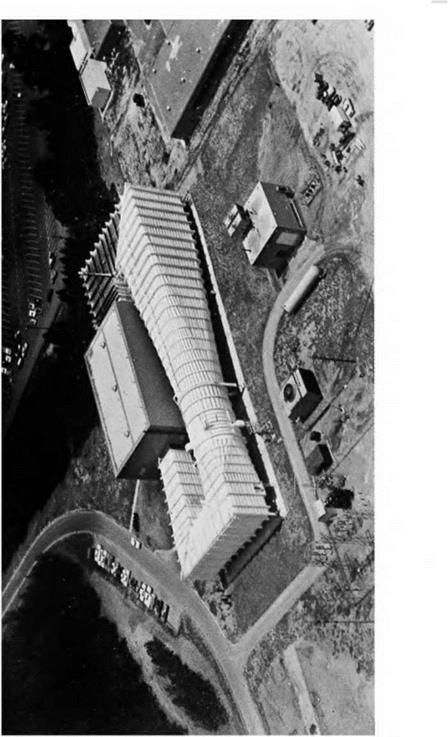Wind tunnels
Because it is difficult to predict the forces on an aircraft (especially drag) with sufficient precision, scale models must be tested using wind tunnels to provide the necessary information.
In experimental work it is usual to allow the fluid to flow past the body rather than to move the body through the fluid. The former method has the great advantage that the body is at rest, and consequently the measurement of any forces upon it is comparatively simple. Furthermore, since we are only concerned with the relative motion of the body and the fluid, the true facts of the case are fully reproduced provided we can obtain a flow of the fluid which would be as steady as the corresponding motion of the body through the fluid.
Many experiments are carried out on models in wind tunnels. There are several types of tunnel, but probably the most commonly used is the closed working-section, closed-return type shown in Figs 2.13 and 2E (overleaf). The model is placed in the narrow working section and air enters through a contraction. The contraction makes the airflow speed in the working section more uniform, and also higher than in the rest of the circuit. Having a high flow speed in the whole circuit would increase the energy losses due to friction. The term closed-return refers to the fact that the air flows round in a complete circuit.
As an alternative, open circuit tunnels are sometimes used. In these, only the working section contraction and fan sections are required as illustrated in Fig. 2.14 (overleaf). The air is simply sucked in from the atmosphere through the contraction to the working section, and then exhausted back into the atmosphere, rather like a large vacuum cleaner. The advantage of the open-return type of tunnel is that it takes up much less space, and costs less than a closed- return type. The principal disadvantages are that dust is drawn in, and the
|
|
Fig 2.13 A closed working-section closed return wind tunnel
|
|
Fig 2.14 A simple open return tunnel
|
flow may be sensitive to external disturbances. Also, the pressure in the working section must be lower than atmospheric, since the air is drawn in from the atmosphere and speeded up. This means that any small leaks around the working section will pull in a jet of air. This type of tunnel is frequently used in college and university laboratories.
|
Fig 2D A small open jet wind tunnel
This type of tunnel is useful for teaching purposes, as the model is readily accessible. Though not often used for aeronautical applications these days, the open jet tunnel has found some favour for road vehicle aerodynamic testing.
Fig 2E Wind tunnel with return circuit (opposite)
(By courtesy of the Lockheed Aircraft Corporation, USA)
The Lockheed-Georgia subsonic closed-throat wind tunnel. Length of centre line 238 m. Mechanical balances measure lift, drag, side force and pitching, rolling and yawing moments. 6710 kW electric motor drives fan of 12 m diameter.
|
|
 |
Fig 2.15 An open jet tunnel
Another type of tunnel that is sometimes employed is the open jet type illustrated in Figs 2D (earlier) and 2.15. In this type of tunnel the working section is not enclosed, which gives it its main advantage, accessibility. For teaching purposes, the open working section is particularly useful, and this type of tunnel is also popular for automotive aerodynamic studies where the effects of wall constraint are less predictable than for aircraft. There are other types of tunnel such as the slotted wall, but let us not confuse ourselves with such subtleties at this stage.
Other common types of tunnel are of course the supersonic and transonic, but these are described later in the book, after compressible flow has been explained.















